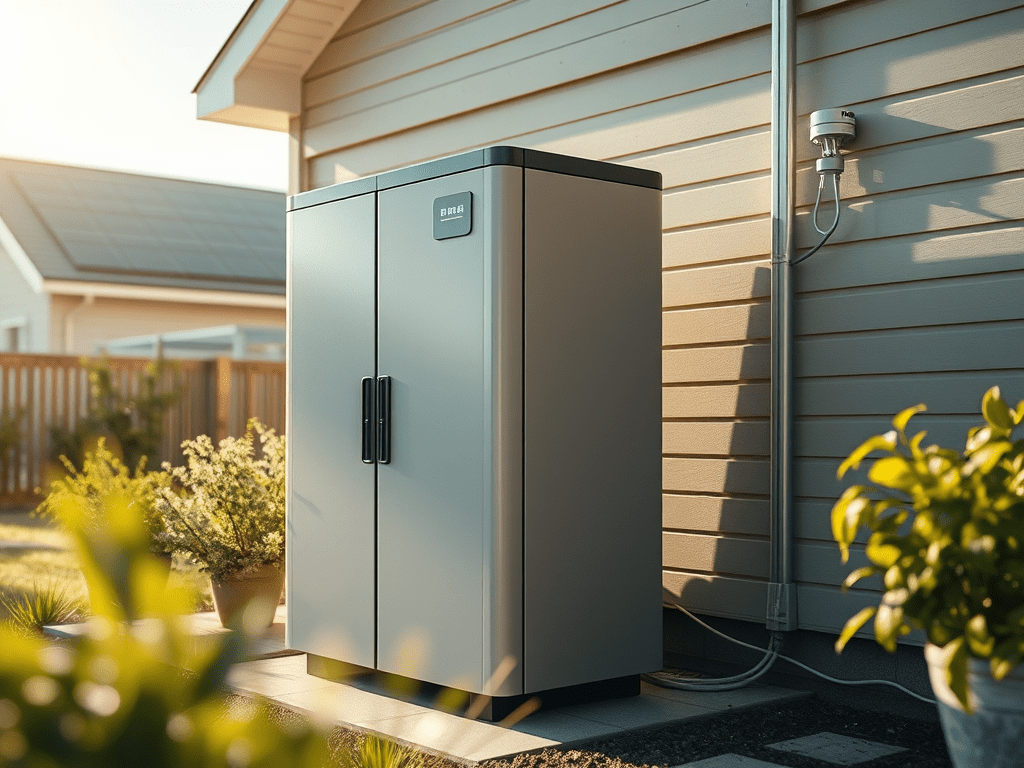How big should your solar energy storage be?
Understanding Your Energy Needs
Before diving into battery sizing, it’s crucial to assess your household’s energy consumption. This involves considering factors like:
- Average Daily Power Usage: This can be determined by checking your electricity bills or using smart meters.
- Peak Power Demand: This is the maximum power your home draws at any given time, often during peak hours.
- Solar Panel Output: The amount of solar energy your system generates, which varies based on factors like location, panel orientation, and weather conditions.
We use a more complex data set to size the full system to be installed, we consider the solar power, the grid charge as well as the pv load to home when it comes to charging the battery and sizing solar power array.
Calculating Your Battery Capacity
To calculate the ideal battery capacity, you’ll need to consider the following:
- Average Daily Energy Consumption:
- Summer: Estimate your daily energy consumption during peak solar production months.
- Winter: Estimate your daily energy consumption during low solar production months.
- Average: Calculate the average of these two values to get a yearly average.
- Bias: Winter power demands and solar, together with grid charging costs.
- Battery Discharge Depth (DOD):
- A lower DOD (e.g., 50%) extends battery life significantly.
- A higher DOD (e.g., 80%) allows for more energy storage but reduces battery lifespan.
- Battery Capacity:
- Calculate the required battery capacity by dividing the average daily energy consumption by the desired DOD.

Examples:
If your average daily energy consumption is 10 kWh and you aim for a 50% DOD:
- Battery Capacity = 10 kWh / 0.5 = 20 kWh
Staying within the charge and discharge C rate improves battery life: - 100ah battery .5c is 50 amps (48v x 50a =2.4 kW)
You can read more details on battery sizes and technical details here.
Choosing the Right Battery Chemistry
- Lithium-Iron-Phosphate (LFP) Batteries:
- Safe and long-lasting
- High cycle life
- Suitable for frequent charging and discharging
- Ideal for residential solar energy storage
Inverter Considerations
- Inverter Power Rating: Ensure the inverter’s power rating matches your peak power demand.
- Inverter Efficiency: A higher efficiency rating reduces energy loss during conversion from DC to AC.
- Inverter Idle Power Consumption: Consider the inverter’s idle power consumption, especially for systems with low energy usage.
Battery DC Power Currents
- Inverter Compatibility: Different inverters have specific DC power current requirements.
- Parallel Batteries: Connecting batteries in parallel can help lower the current drawn from each battery, reducing stress and extending their lifespan.
- Power conversion is inverter watts (load) divided by battery voltage to give you the amperes that are loaded onto the battery system.
For example:
A 8kw inverter with a 48v system voltage will peak currents around 167 amps.
Three batteries would share the current which would be 56 amps per battery.
Factors Affecting Battery Lifespan
- Temperature: Extreme temperatures can shorten battery life & capacity. Consider temperature control measures.
- Charging and Discharging Cycles: Limiting the number of full cycles extends battery life.
- State of Charge (SOC): Avoiding deep discharges and overcharging helps maintain battery health.
- Reduce stresses: lower the current per battery to cause less system and cell stress.
Conclusion
Sizing your solar energy storage system is a critical step in maximizing its benefits. By carefully considering your energy needs, choosing the right battery, and selecting a suitable inverter, you can optimise your system’s performance and longevity.
Additional Tips
- Consult with a solar energy professional to get personalised advice.
- Monitor your energy usage and adjust your system as needed.
- Consider future energy needs and potential upgrades.
- Explore offset costs and energy tariffs.
By following these guidelines, you can make informed decisions about your solar energy storage system and enjoy the benefits of clean, renewable energy.
Please note: This is a general guide, and specific requirements may vary. Always consult with a solar energy professional to determine the optimal battery size and configuration for your home.
Your solar array size will determine how much you could charge the battery from solar panels. A big battery and small solar array could mean that you will grid charge. This could take place in Winter months. Check out what tariffs are available to you.

No responses yet